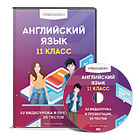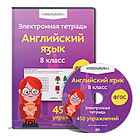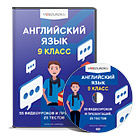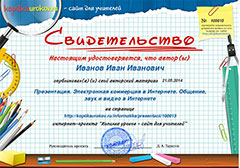Тема урока: People and animals in the country and in the city.
Место и время проведения урока: 4 А класс, вторая четверть.
Цели урока:
Формирование коммуникативной компетенции учащихся
Задачи:
Практические:
- развитие умений восприятия и понимания иноязычной речи на слух (речь учителя и учащихся на уроке);
- развитие умений и навыков речи (монологическая и диалогическая речь в рамках темы урока);
Развивающие:
- развитие памяти и мышления (в рамках темы урока);
- развитие внимания, логики и языковой догадки учащихся (в рамках темы урока);
- развитие умений коллективной деятельности (в рамках темы урока);
Воспитательные:
- воспитание уважительного отношения к стране изучаемого языка, к родному краю, природе, животному миру.
Общеобразовательные:
- расширение кругозора обучающихся (в рамках темы урока);
Тип урока: Урок обобщения и систематизации знаний
Учебный материал направлен на формирование иноязычных речевых умений в различных видах речевой деятельности: чтении, говорении, письме, аудировании.
Оборудование и оснащение урока: презентация, компьютер, проектор, карточки со словами по теме, плакат «Дерево успеха», карточки –символы настроения.
Ход урока:
I. Оргмомент. Постановка темы и целей урока.
T : Good afternoon, boys and girls! I am glad to see you.
P : Good afternoon. We are glad to see you too.
T : How are you?
P : We are fine, thanks. Отвечая на вопрос учащиеся показывают смайлики (радостный, нейтральный, грустный).How are you?
T : I am fine, thank you. Sit down please. Today we,ll finish our unit “Being happy in the country and in the city”.Are you ready to start? Look at the pictures and tell me, what is the theme of the lesson today? (слайд 2)
P: People and animals in the country and in the city.
T : Right you are. We shall have a talk about our pets, speak about countries and cities and discuss what animals and people do for each other.
II. Актуализация знаний учащихся.
1. Развитие навыков устной речи.
T: You know that some people live in the city, town and some – in the country. Are they different or not?
P: They are different.
T: Where do you live?
P: I live in the country. I live in Chamzinka.
T: What are there in your village?
P: There are many big houses in the streets. There are beautiful gardens with flowers.
T: Do you like to live in the country? Why do you like it? Tell me please about your native village.
P: We can go to school, ride bicycles, read fairy-tales and have a cup of tea in the evenings. Our village is nice, wonderful, super.
T: What cities do you know?
P: Novgorod, Paris, London, Moscow…
T: What do you know about Saransk?
P: It is a town.
T: Did you visit Saransk?
P: We went to Saransk last year. My sister\brother, grandmother lived in Saransk.
T: What are there in Saransk?
P: There are a lot of big houses, but gardens are small, many cars, many people, a lot of shops.
2. Активизация изученных лексических единиц по теме “Being happy in the country and in the city”.
T: Let’s complete the table. What is there in the country? What can you see in the city and in the country?
In the country
In the city
(Учащиеся подходят по очереди к доске и выбирают изученные слова по теме (a house, a field, a garden, an apple tree, a road, a forest, names of domestic and wild animals), а также предложения.
Example: P1. You can see animals in the zoo ...
P2. The streets are wide and long...
P3. The houses are small...
P4. You can see gardens with flowers...etc.
T: You know that animals live with people and help them for a long time. We can see them in the big cities and in the small villages, in the forest and in the rivers.
T: Do you know animals? Let us check it. Look at the screen and name the animal. ( слайд 3)
Well! I see you know these animals. Now let’s divide these animals into two groups (domestic animals and wild animals).Дети подходят по очереди к доске и прикрепляют картинку к нужной группе..
T: Tell me please where do domestic animals live? And what about wild animals?
P: Domestic animals live in the house, on the farm. Wild animals live in the forest, in the zoo, in the desert and in the mountains
T: And now let us help these animals to find their homes. (слайды 4-11)
Example: P1. The camel lives in the desert.
P2. The crocodile lives in the river.
P3. The wolf lives in the forest.
P4. The whale lives in the sea.
3. Развитие умений и навыков аудирования. Ex.40, p.46.
T: Listen and talk about the pet that Dima would like to have. What animal would Dima like to have?
P1. He would like to have a dolphin. It’s smart.
P2. Dima would like to have a dolphin. I think it’s a wonderful animal. It can swim, dive and jump.
T: What animal would you like to have? And why?
P1. I would like to have a dog. It’s clever and brave. I would like to go for a walk with my dog.
P2. I would like to have a parrot. It’s smart. It eats corn. It can speak. I would like to teach him to read.
4. Развитие умений и навыков говорения по теме.
Teacher. Tell us about your favourite animal. Look at the pictures in ex. 35 on p. 45. Don’t name this animal. We’ll try to guess.
Example:
P2. It lives in Australia. It has got a long tail and strong legs. It can jump well. It likes to eat grass and leaves. It’s a nice funny animal. I like it very much. (It is a kangaroo.)
P3. It lives in the mountains. It has got strong wings. It can fly high in the sky. It eats mice and small birds. It’s strong and brave. (It is an eagle.)
III.Физпауза.
T: I think you are tired. Let’s have a rest. Stand up, please.
Дети выполняют движения под песенку « Head and shoulders, Knees and toes…»
T: Thank you. Take you seat.
IV. Применение знаний.
1. Развитие умений и навыков говорения по теме. Ex. 43, p. 47. (слайд 12)
Учащиеся делятся на три группы и получают задание. После обсуждения представляют свои ответы.
T: Say what animals and people do for each other.
1) What do animals do for people?
Example: P1. Camels can carry things for people.
P2. Dogs can help and save people.
P3. Sheep can give clothes and food.
P4. Cows can give milk.
2) What do people do for animals?
Example: P1. People can make houses for birds.
P2. People feed hens and wash horses.
P3. People can take dogs for a walk.
3)Which animal is the most useful. And why?
Example:
P1. I think camels are the most useful animals because they can carry a lot of things for people.
P2. I think sheep are the most useful animals because they can give wool and food.
2. Работа с текстом, драматизация диалогов. Ex. 36, p. 45. (слайд 13)
T: Match the questions with the right answers to make a dialogue. (Восстанавливают диалог, расставляя реплики в нужном порядке). Key: 1c; 2a; 3e; 4b; 5d.
T: Listen to the dialogue and check if you were right. Act out the dialogue.
1.Have your got a pet?
2.What’s its name?
3.What does it like to eat?
4.What does it like?
5.What can it do?
a.Ashby.
b.Ashby is big, kind and strong.
c.Yes, I’ve got a camel.
d.Ashby helps my father to carry things.
e.Grass and apples.
V.Подведение итогов урока, оценки, рефлексия, д/з
T: Now, it’s time to finish our lesson. Today we have spoken about the country, the city and the animals. Where do you want to live: in the country or in the city? Why? Do you like our village?
And I hope you agree with me: our home place – a country is beautiful. We love it!
I like the way you work today and I’ll give you only excellent and good marks.
Do you like our lesson today? Give your marks to our lesson. I hope you have known some interesting and useful things. Учащиеся подходят к доске и вывешивают смайлики на дерево успеха.
Open your diaries and write down your home task.
Your homework: make up riddles about animals.
So, our lesson is over.
Good bye, children!















